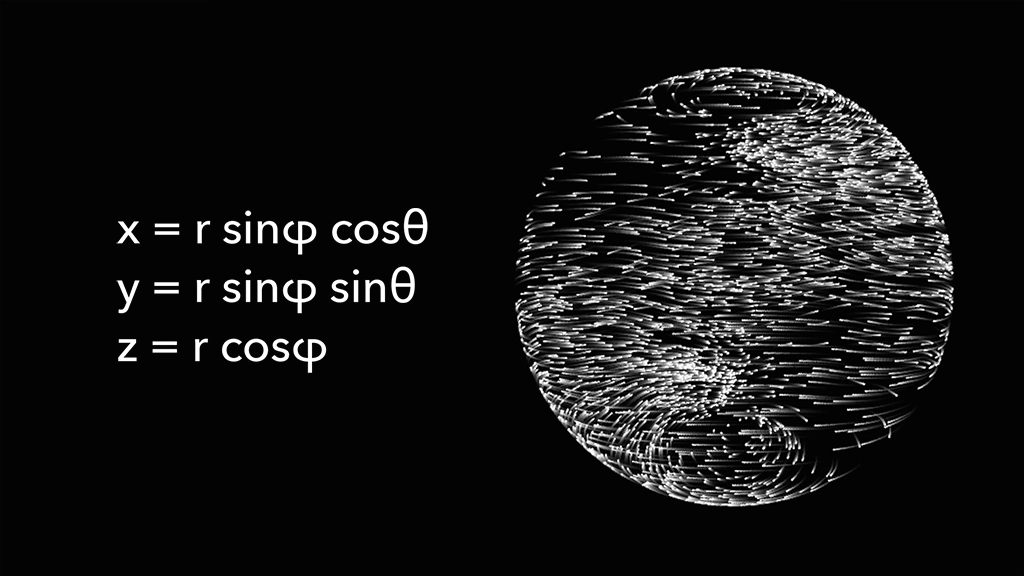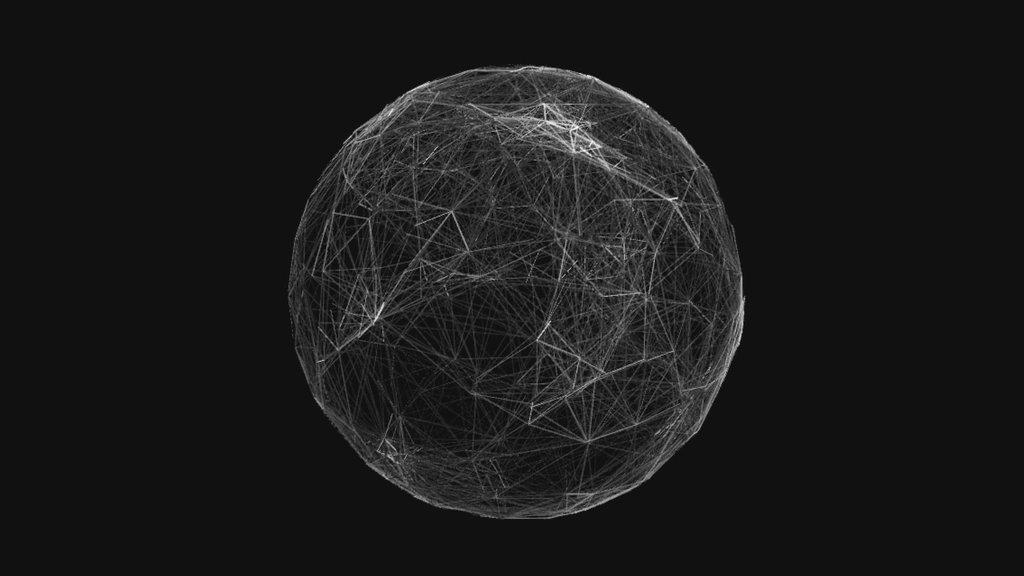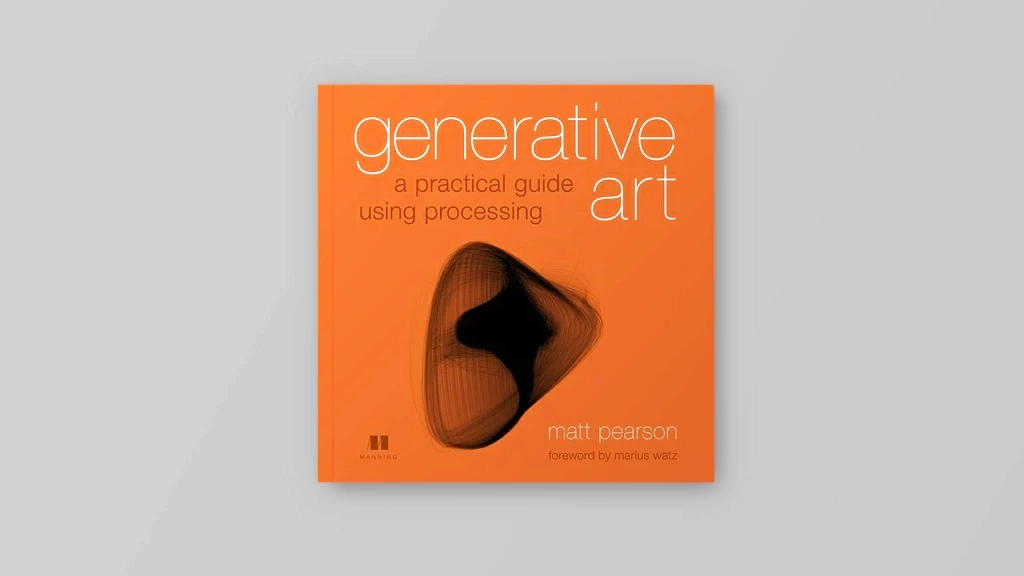Date:2023-06-02
The Particles on a spherical surface Code / How to create a 3D shape with Processing
How to create particles on a spherical surface with Processing.

The Particles on a spherical surface Code
This code is for particles moving as if flowing on a spherical surface. It utilizes the spherical coordinate system to obtain the positions of the points.
int ParticleCount = 3000;
float radius = 200;
float noiseNum;
Particle[] Particles = new Particle[ParticleCount];
void setup(){
size(1300,1300,P3D);
for(int i = 0; i < ParticleCount; i++) {
Particles[i] = new Particle();
}
}
void draw(){
fill(0,20);
noStroke();
rect(0,0,width,height);
translate(width/2,height/2,radius);
rotateX(PI*0.25);
//rotateX(frameCount*0.001);
//rotateY(frameCount*0.003);
//rotateZ(frameCount*0.002);
for(int i = 0; i < ParticleCount; i++){
Particles[i].update();
}
}
class Particle{
PVector p;
float ranCos, radNum;
float noiseScale = 0.01;
Particle(){
ranCos = random(-1, 1);
radNum = radians(random(360));
float xPos = radius * sqrt(1 - pow(ranCos,2)) * cos(radNum);
float yPos = radius * sqrt(1 - pow(ranCos,2)) * sin(radNum);
float zPos = radius * ranCos;
p = new PVector(xPos, yPos, zPos);
}
void update(){
noiseDetail(3,0.65);
noiseNum = noise(p.x*noiseScale, p.y*noiseScale, p.z*noiseScale) * 0.01;
float sign = 0;
if (p.y > 0){sign = 1;}
if (p.y < 0){sign = -1;}
float aCos = acos(p.z / sqrt(pow(p.x, 2) + pow(p.y,2)+pow(p.z,2)));
float signAcos = sign * acos(p.x / sqrt(pow(p.x,2)+pow(p.y,2)))+noiseNum;
p.x = radius * sin(aCos) * cos(signAcos);
p.y = radius * sin(aCos) * sin(signAcos);
p.z = radius * cos(aCos) + cos(signAcos)*1.2;
stroke(255);
strokeWeight(2);
point(p.x, p.y, p.z);
}
}
Samples



Recommends
generative art / a practical guide using processing
I always recommend this book, whenever I am asked by a beginner, “How do you make your work?”. The book includes high-quality examples of generative art.



